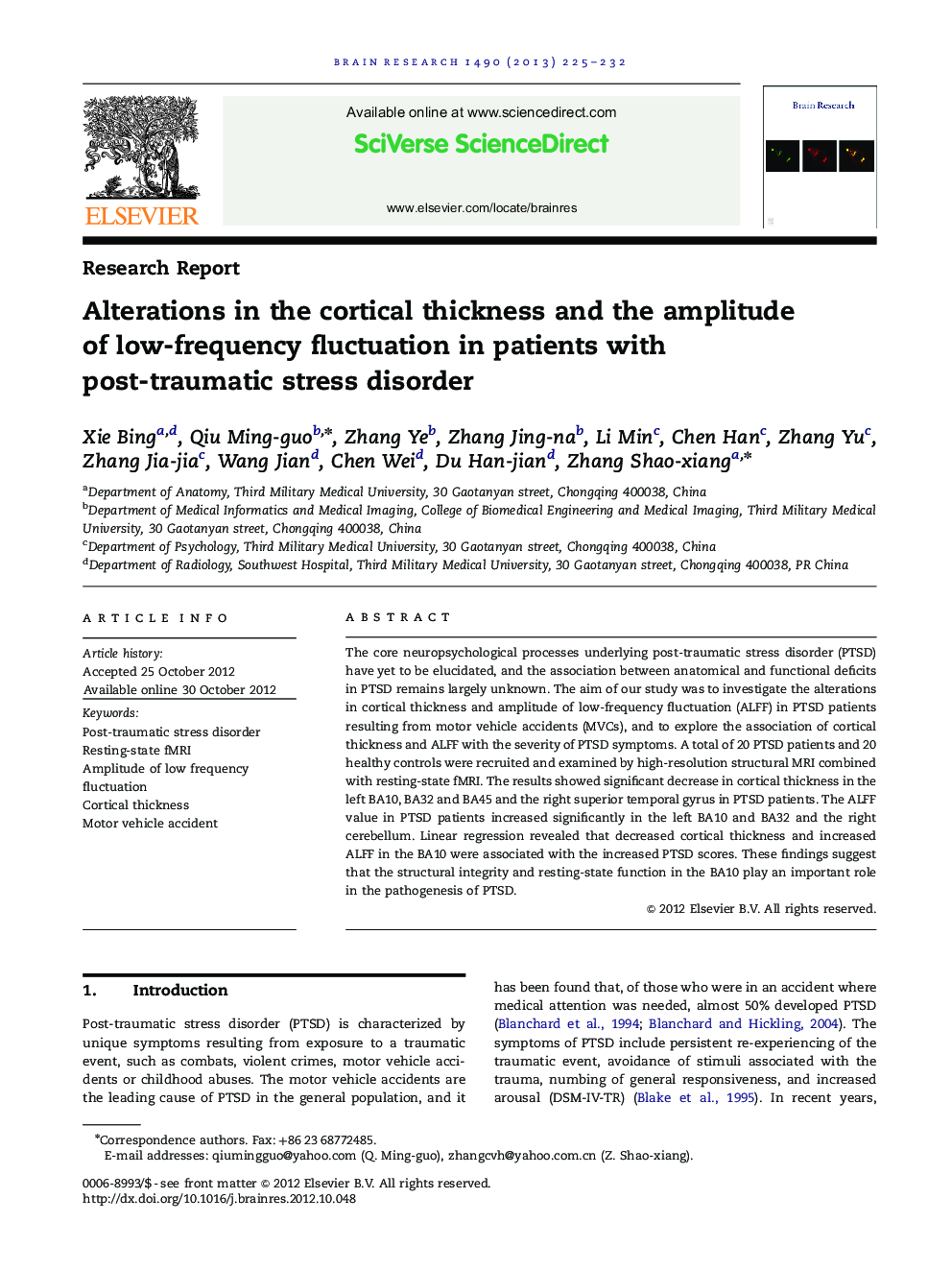| کد مقاله | کد نشریه | سال انتشار | مقاله انگلیسی | نسخه تمام متن |
|---|---|---|---|---|
| 4324883 | 1613949 | 2013 | 8 صفحه PDF | دانلود رایگان |

The core neuropsychological processes underlying post-traumatic stress disorder (PTSD) have yet to be elucidated, and the association between anatomical and functional deficits in PTSD remains largely unknown. The aim of our study was to investigate the alterations in cortical thickness and amplitude of low-frequency fluctuation (ALFF) in PTSD patients resulting from motor vehicle accidents (MVCs), and to explore the association of cortical thickness and ALFF with the severity of PTSD symptoms. A total of 20 PTSD patients and 20 healthy controls were recruited and examined by high-resolution structural MRI combined with resting-state fMRI. The results showed significant decrease in cortical thickness in the left BA10, BA32 and BA45 and the right superior temporal gyrus in PTSD patients. The ALFF value in PTSD patients increased significantly in the left BA10 and BA32 and the right cerebellum. Linear regression revealed that decreased cortical thickness and increased ALFF in the BA10 were associated with the increased PTSD scores. These findings suggest that the structural integrity and resting-state function in the BA10 play an important role in the pathogenesis of PTSD.
► PTSD patients had focal cortex thinning in the left BA10, BA32, BA45.
► PTSD patients had significantly increased ALFF in the left BA10, BA32 and right cerebellum.
► Cortical thickness and ALFF in the BA10 were associated with PTSD scores.
Journal: Brain Research - Volume 1490, 15 January 2013, Pages 225–232